Are you a digital hoarder? 12 signs plus tips to declutter your data
An overview of what digital hoarding is, plus data hoarding habits to consider and tips to clean up our digital clutter.


Try Norton 360 FREE 7-Day Trial* - Includes Norton VPN
7 days of FREE* comprehensive antivirus, device security and online privacy with Norton VPN.
Join today. Cancel anytime.
*Terms Apply
Whether you hang onto items too long yourself or are a self-proclaimed neat freak, on some level we all have a relationship with clutter. Our captivation with the concept has even spun out a few franchises. Thanks to TLC’s “Hoarders,” the Marie Kondo craze, and “The Home Edit” frenzy, there’s no shortage of resources for how to tidy up our physical surroundings.
But what about where we spend a great deal of our days — on our devices and in cyberspace? On average, adults will spend anywhere from 34 years to 44 years of their life staring at screens. And much of that time, we’ll be ignoring our digital clutter. After all, you can’t actually trip over hundreds of unread emails, thousands of blurry photos, and maybe even all those “The Home Edit” episodes downloaded on your devices. In fact, digital hoarding, meaning letting our digital content pile up, can have negative consequences on our wellbeing, on our cybersecurity, and on the environment.
All this to say, it’s time to look inward — in your inbox, cloud storage, desktop, phones, etc. — and ask yourself, “Am I a digital hoarder?” Consider the following points and also tips to declutter your digital life for the better.
What is digital hoarding?
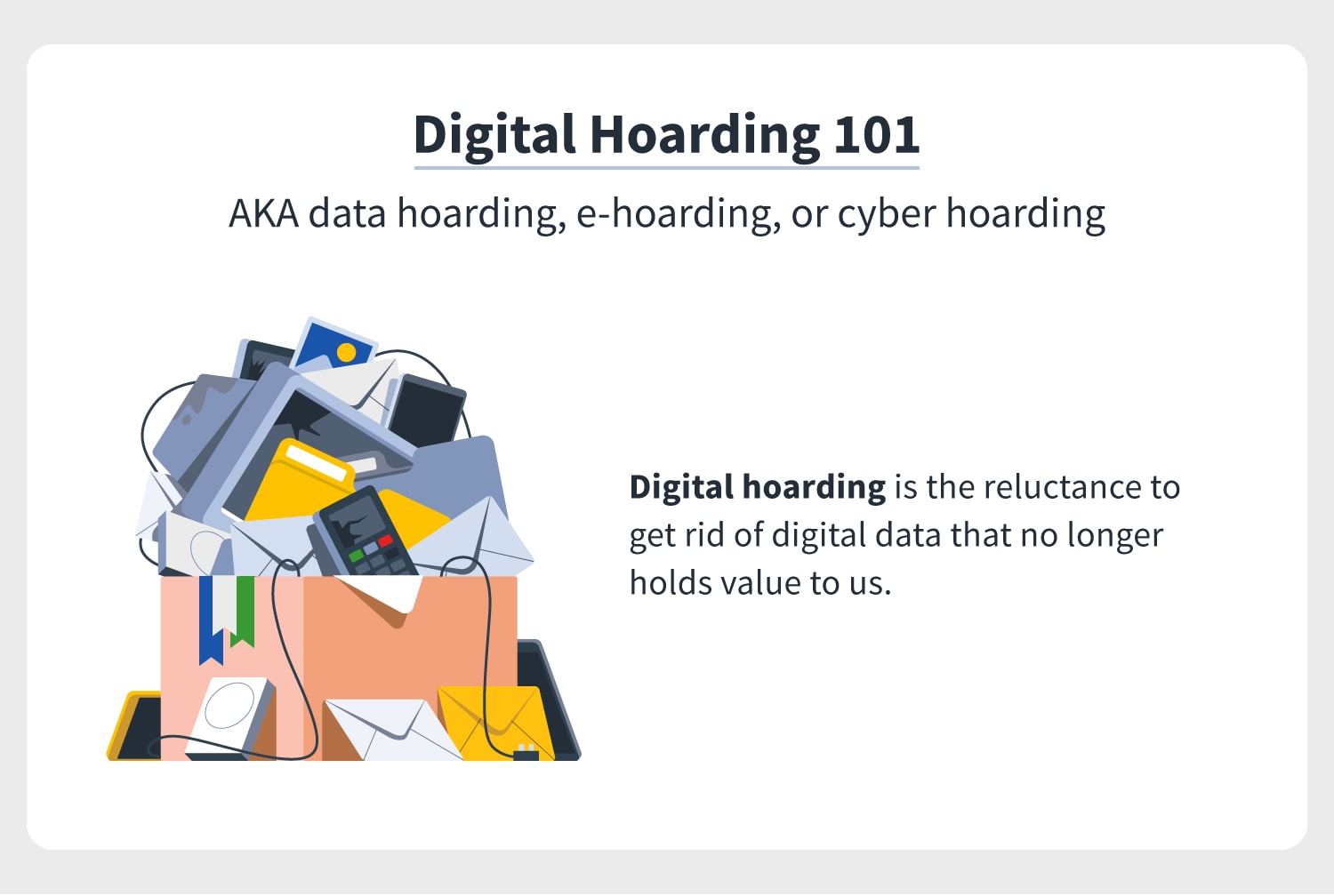
Digital hoarding, also known as data hoarding, is the reluctance to get rid of digital data that no longer holds value to us. This might be because that data is unused or even unusable. It’s also sometimes called e-hoarding or cyber hoarding.
And it can happen to anybody. With digital storage capacities ever increasing, it can feel like we have room to hold onto an excessive amount of digital content. But in doing so, we run the risk of developing an unhealthy attachment to it.
It’s worth noting that while physical hoarding disorders have been recognized by the medical community, digital hoarding has not yet. In fact, the term “digital hoarding” was only first introduced in 2015.
Defining digital clutter
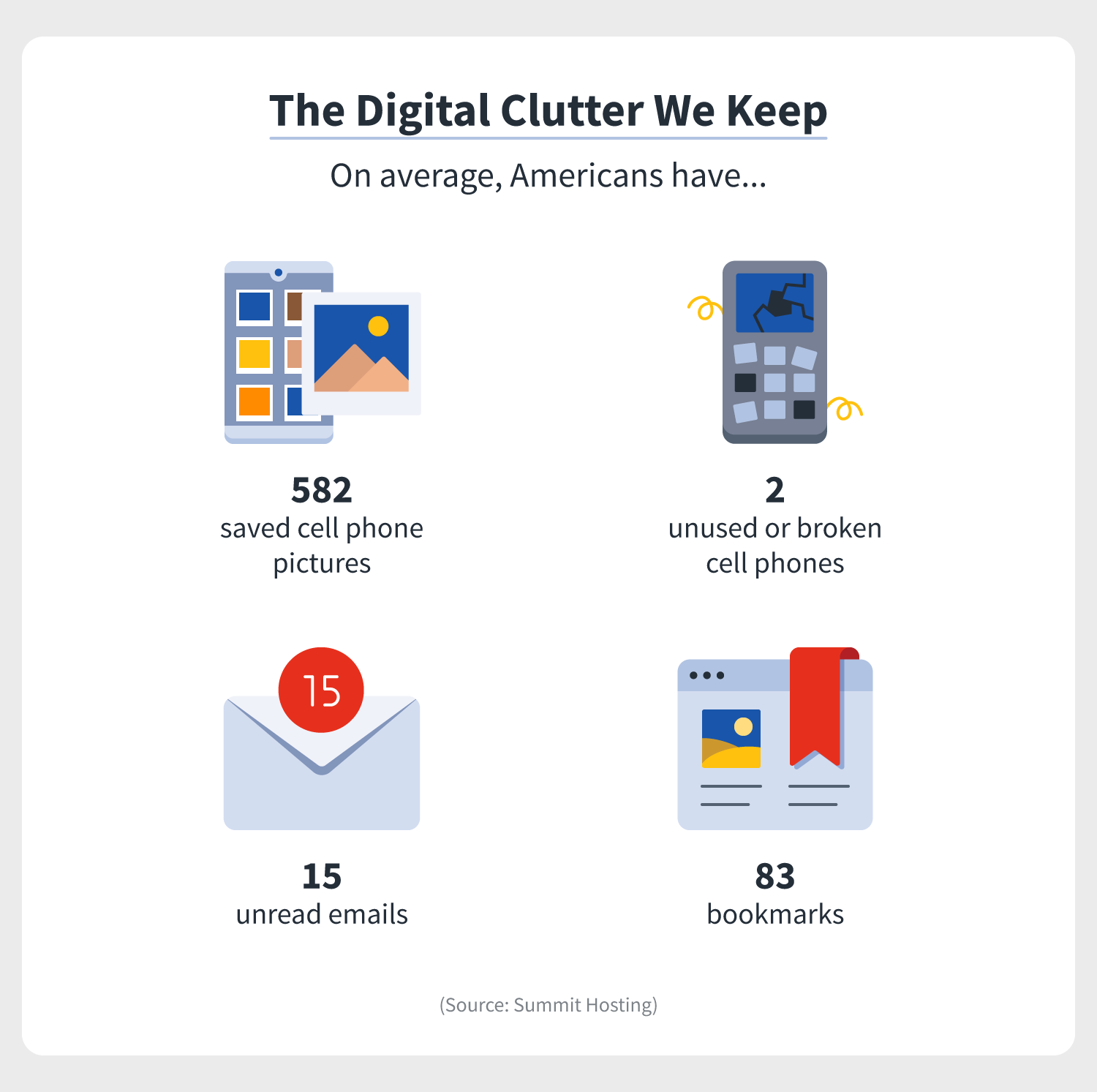
Much like how our drawers of USB flash drives, piles of CDs, or boxes of camera film didn’t accumulate overnight, neither does our digital clutter. It can come in these physical forms, but digital clutter is primarily virtual. For instance, one survey says that the average American has:
○ 83 bookmarks
○ 7 open tabs in their browser
○ 15 unread emails
○ 13 unused phone apps
○ 582 saved cell phone pictures
○ 2 unused or broken cell phones
○ 20 desktop icons
○ 209 GB of cloud storage
○ 654 GB of external storage
○ 4 external hard drives
Digital files, folders, music, movies, computer programs, and even the “friends” we keep on social media are also forms of digital clutter.
Types of digital hoarders
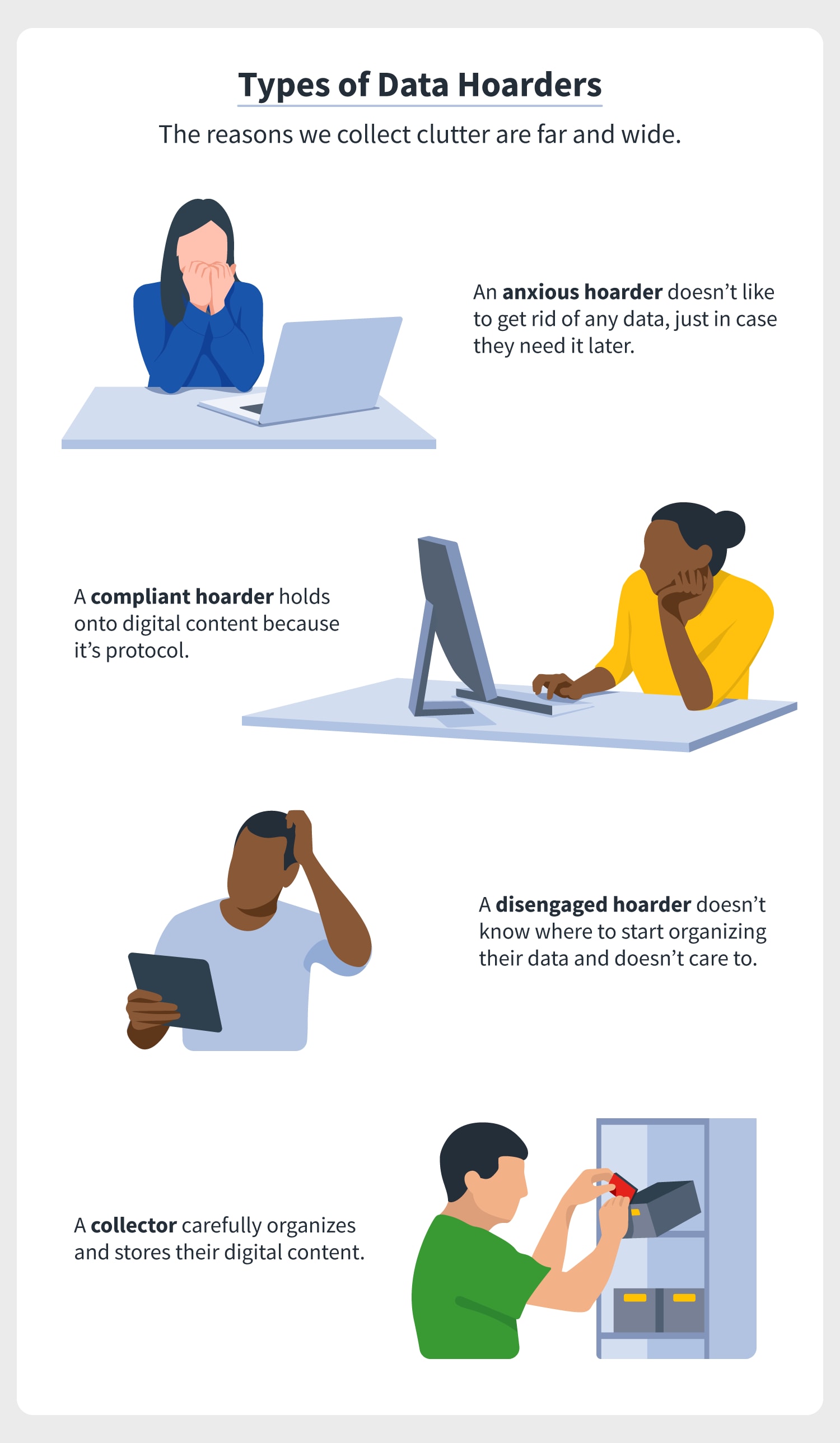
Turns out, people have their reasons for hoarding in cyberspace. For instance, some companies might encourage people to keep emails for later reference. Others recognize that data storage solutions are cheap, so why not save everything? There are even some folks who like to hang onto digital content to use against others.
Nick Neave, associate professor in psychology and director of the Hoarding Research Group at Northumbria University, has been at the forefront of discovering why. He began with a 2019 study surveying people’s digital hoarding behaviors and followed up with a 2020 study that identifies types of digital hoarders. They are the following.
The anxious hoarder
The anxious digital hoarder does not like to get rid of their digital clutter, period. As the moniker indicates, to the anxious digital hoarder, throwing something away stirs up waves of anxiety. After all, what if that document they haven’t opened in a decade becomes important in the future? Instead, they keep mostly everything because it gives them comfort to know they have them, just in case.
The compliant hoarder
The compliant digital hoarder isn’t a data hoarder by choice. It’s often workplace protocols or organization structures that make them hold onto things. Usually, compliant digital hoarders have no emotional attachment to the digital clutter they keep. Still, by being compliant with data hoarding, they are also being compliant with the negative consequences of digital hoarding.
The disengaged hoarder
The disengaged digital hoarder simply doesn’t know what to do with all of their digital clutter. They’re not very organized in the first place and it feels too much of a headache to tidy up their digital life. Not to mention, it takes less time to keep something than toss it. Some might consider disengaged hoarders lazy, but they see no harm in, well, what they can’t see: their stockpiles of data.
The collector
The collector might not even be a digital hoarder at all. That’s because, similarly to physical hoarding, there’s a difference between hoarding and collecting. Collectors definitely have a lot of digital content, but they have a dedicated and organized place in cyberspace for all of it. They’re systematic about how they categorize and, most importantly, they have a reason for hanging onto all of it. Like all of these types of digital hoarders, however, they are still playing into the negative consequences of data hoarding.
Downsides of digital hoarding
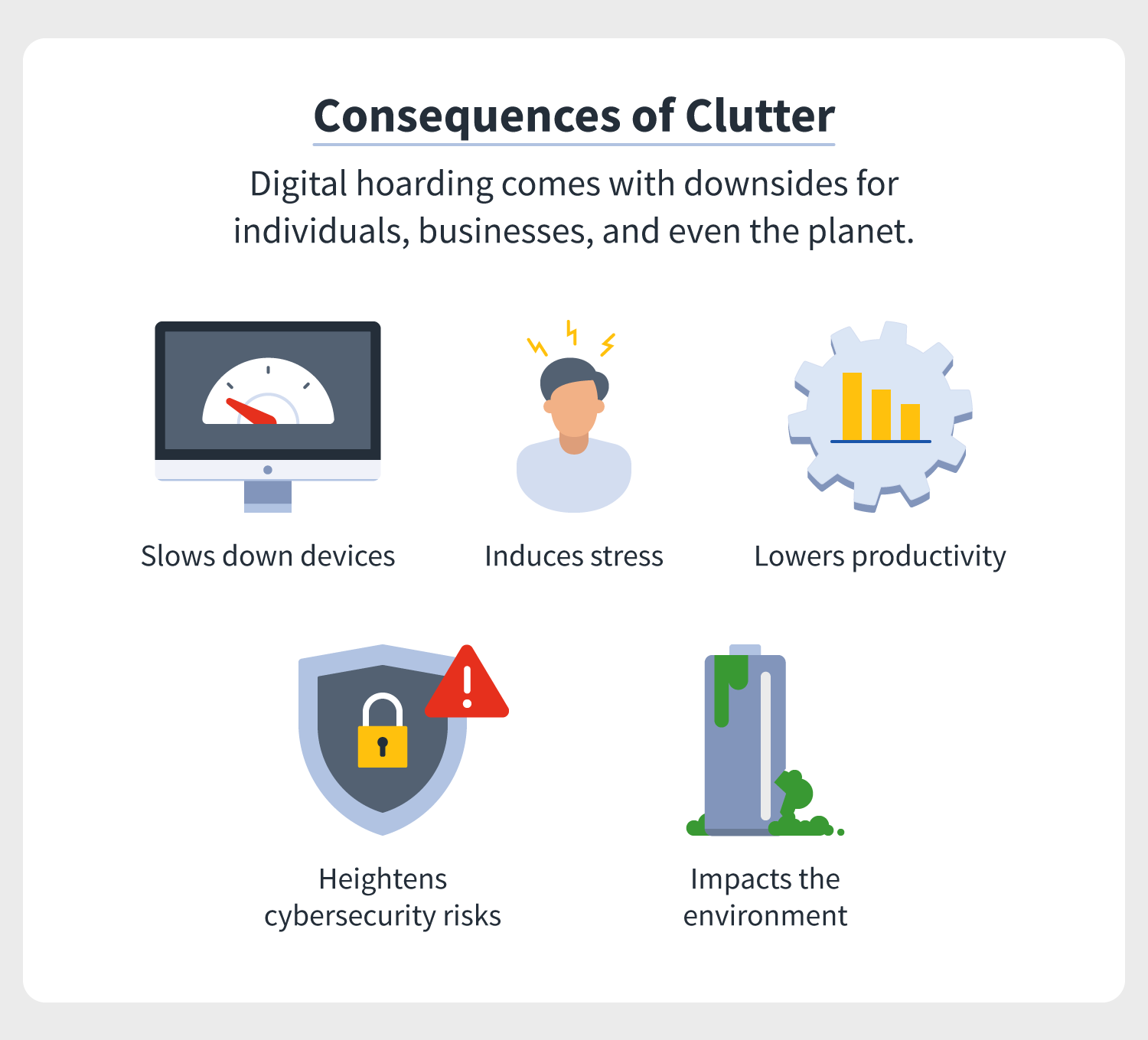
There are various reasons why we amass digital clutter. But the downsides of digital hoarding are all the same for individuals, companies, and the planet.
Slows down devices
The more data your hard drive has to manage, the harder it has to work and, therefore, could slow down our devices. This, in turn, makes us less productive. And those programs on our computers and apps on our phones that we don’t use? Those require storage, too — for data we don’t even use.
Heightens cybersecurity risks
The more data we keep, the more susceptible it is in the event of a cybersecurity incident. Consider how much damage a cybercriminal could do with 10 files versus 100 files. Chances are, the more digital content you keep, the more sensitive information it contains. In addition, the more content you put at risk, the more effort is required to manage those risks.
Lowers productivity
Digital hoarding can come easy because the internet and its algorithms make it easier for us to find things. All we need to do is punch what we want into a search bar, and voila! But it’s not this easy to locate all of our digital data — consider that photo you took that one time at that one place that you’ve been scrolling through your phone to find for 10 minutes. Sifting through clutter is unproductive and, when it comes to the workplace, a waste of time. For this reason, we all should try to keep our digital lives organized.
Induces stress
The more data you have, the more you need to control it. And if you’re disorganized, chances are, you’ll lose that control fast. When situations feel unmanageable, this can induce stress which in turn negatively affects our well-being. Do as Marie Kondo does, and hang onto only what’s important and “what sparks joy.”
Impacts the environment
Even as we often view the cloud as, well, unviewable or intangible, this is not the case. Our data is physically stored somewhere — and that somewhere is on servers. And it takes a lot of energy to power them. One study estimates that our devices and the servers that support them account for nearly 4 percent of global greenhouse gas emissions. Worse yet, that number is estimated to double by 2025. No matter how you view your digital footprints, know they do impact our carbon ones.
12 signs of data hoarding + tips to quit
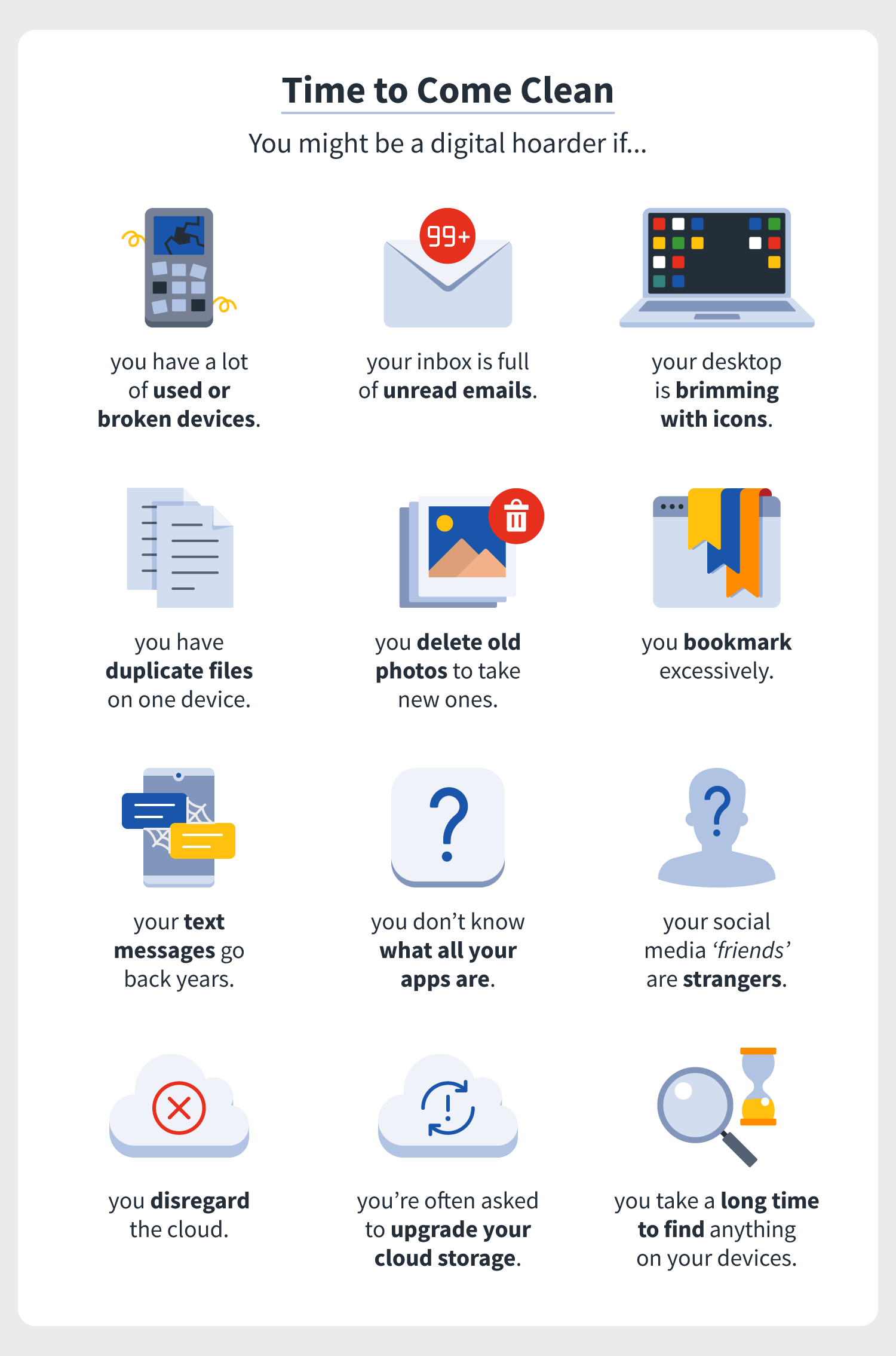
Still uncertain of whether you’re a digital hoarder? The following signs of data hoarding might help you come clean. Pore over and ponder how you can make a clean break from digital hoarding habits with these tips for how to get rid of digital clutter.
And don’t think that you need to tackle all of these in one sweep. Take it slow, and regain control of your digital life, one bookmark, old file, and desktop icon at a time.
1. You have a collection of used or broken devices
Hanging onto one old device as a backup is understandable, but a handful is a little excessive. If you’re not using it, chances are it’s just taking up space. And if it’s broken and you haven’t yet fixed it, it’s time to face the music that might never get to it.
TIP: If it’s broken, toss, donate, or recycle it. If you have more than one of the same used devices, sell or toss all but one.
2. Your inbox is full of unread emails
Sifting through an onslaught of unread emails can take up a lot of your time and, in turn, decrease your productivity. Even seeing the notifications on your phone can be stress-inducing.
TIP: Unsubscribe diligently to newsletters you never read. Or, for the quickest way to a clean slate, click “delete all.” If a message is awfully important, the sender will send it again.
3. Your desktop is brimming with icons
Your desktop should be treated just like your physical desk, so we must recognize that clutter makes it harder to concentrate. Moreover, our computer desktops are supposed to make navigating our computers easier — not harder.
TIP: Categorize your icons into easy-access folders, like “important,” “quick reference,” and even “toss me today” for those one-time downloads and screenshots.
4. You have duplicate files on one device
Creating duplicate files is important for any data backup strategy, but it’s only effective if those backups are in different locations or devices. Duplicate files on the same device? That’s just excessive.
TIP: Be proactive and delete an additional copy whenever you see it. If it’s extremely important, back it up in cloud storage.
5. You delete old photos to take new ones
According to some counts, 63 percent of people never delete photos from their personal devices. So, you shouldn’t feel alone if you’re one of them. Still, when you’re unable to take a new photo because old ones are in the way, it’s time to reevaluate the photos you keep.
TIP: Once a month, take a scroll down camera roll lane and delete what you’ve amassed unnecessarily, including blurry images and screenshots.
6. You bookmark excessively
How often are you really referencing your bookmarks? Believe it or not, these do take up space on your device, because you’re asking it to remember a site for later.
TIP: Set a bookmark limit for yourself, whether that’s five or 20, and audit yourself monthly to actually reference them and make room for more.
7. Your text messages go back years
By some counts, 47 percent of people never delete texts from their personal devices. But much like those bookmarks, having your phone hang onto texts for years on end requires memory.
TIP: Enable your “keep messages” features for only 30 days or one year, never forever.
8. You don’t know what all your apps are
Apps are like clothes in our closets. We hang onto them for longer than necessary, because what if one day we’ll want to wear (or use) them again? In fact, when unused they just take up space. According to one study, the average person has 40 apps installed on their phone but they direct nearly 90 percent of their attention toward only half of them.
TIP: Purge your apps by beginning with the ones you only use on an as-needed basis such as those relating to travel. For those you keep, turn on notifications only for the ones you use daily.
9. Your social media “friends” are mostly strangers
Just the number of social media platforms that we can be on is dizzying, let alone all the followers and friends we amass on each — and their potentially negative energies. Considering that, on average, people spend two and a half hours on social media every day, it’s important to reevaluate the social media friends we keep.
TIP: Take a social media sabbatical for a week or even up to a month, then return to your platforms with a clean conscience. Delete, unfollow, or unfriend whoever you don’t interact with regularly or who is unpleasant.
10. You disregard the cloud
Sometimes, it’s easier to ignore something when we don’t understand it. Given we can’t see it, this is often the case with our cloud storage, resulting in users setting auto backups and syncs — and hogging up a lot of storage because of it.
TIP: Every month, spend 10 minutes or so in your cloud storage solutions — whether it’s Dropbox, Google Drive, iCloud, etc. — and acclimate yourself with what’s being backed up where and how it’s categorized. Delete anything you don’t need and readjust settings accordingly.
11. You’re often asked if you want more cloud storage
If your device is begging you for more room to grow, it could be the case that you need to look beneath the hood, meaning your storage to evaluate what’s hogging up space.
TIP: Once a week, detox your download folder on your computer and empty your digital trash for good. Also, audit your phone photos and double-check your “keep messages” feature on your phone.
12. You take a long time to find anything on your devices
If you always dread having to search for a file, photo, or email, that’s a quick giveaway that you’re disorganized. Chances are that your data has become unmanageable.
TIP: Make technology do the organizing for you and set up filters in your emails so that you don’t miss important messages and spam goes straight to the junk folder.
The bottom line: Digital hoarding can happen to anyone
Have some of these digital hoarding habits? Don’t feel down. Stockpiling digital data can happen to anyone, oftentimes because we don’t even know we’re doing it. What matters most is that we correct our habits and establish a strong cyber hygiene by doing it.


Cyber threats have evolved, and so have we.
Norton 360™ with LifeLock™, all-in-one, comprehensive protection against viruses, malware, identity theft, online tracking and much, much more.
Try Norton 360 with Lifelock.
Editorial note: Our articles provide educational information for you. Our offerings may not cover or protect against every type of crime, fraud, or threat we write about. Our goal is to increase awareness about Cyber Safety. Please review complete Terms during enrollment or setup. Remember that no one can prevent all identity theft or cybercrime, and that LifeLock does not monitor all transactions at all businesses. The Norton and LifeLock brands are part of Gen Digital Inc.




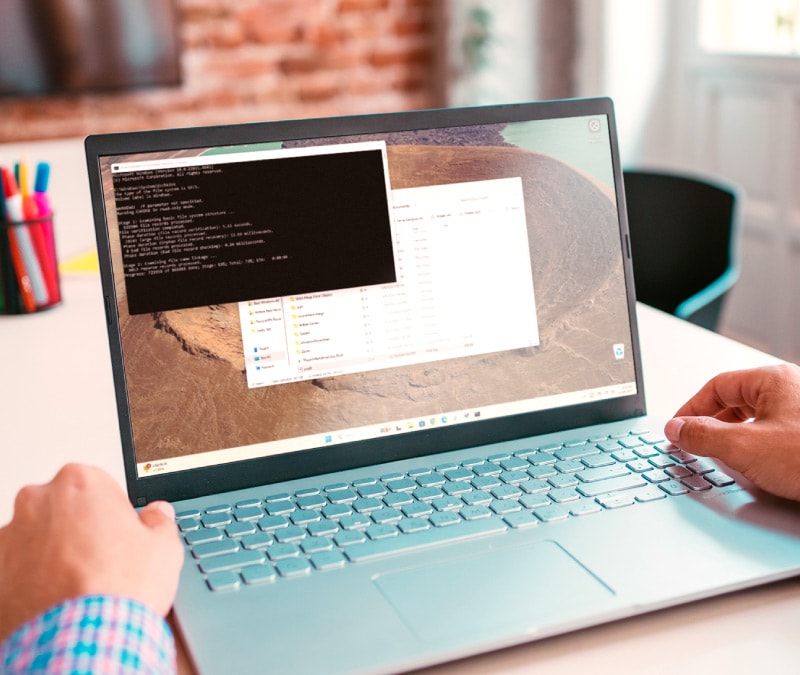
Want more?
Follow us for all the latest news, tips, and updates.